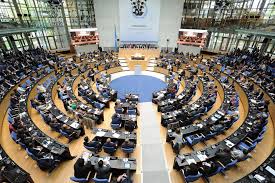
It’s Time to Double Down on ESG Issues in Built Environment
MUI Deputy Director Anupam Nanda emphasises the need to look beyond politics, advocating for greater focus on environmental, social and governance issues in regulating the built environment to address climate change.
We are already experiencing profound impacts of climate change caused by anthropogenic activities such as industrialisation and ever-increasing urbanisation. No parts of the world, as we know, can escape unscathed. Along with this, thorny social issues, nervous geopolitics and fragile governance structures contribute to the severity of these impacts through inadequate or misplaced policy focus and mismanagement of resources.
 Unfortunately, these impacts are unequal. Some communities have greater access to resources and preparedness, while others have none. The built environment reflects these disparities, with shelters and livelihoods more frequently uprooted around the world. Urban research is now critical to understand the impacts and urgently developing policy solutions.
Unfortunately, these impacts are unequal. Some communities have greater access to resources and preparedness, while others have none. The built environment reflects these disparities, with shelters and livelihoods more frequently uprooted around the world. Urban research is now critical to understand the impacts and urgently developing policy solutions.
Politics plays a vital role in shaping the discourse and acceptance around these issues. Sometimes, it favours progress, and sometimes, it hinders it. While politics takes its own course – determined by term-orientated focus and goals dependent on the party in power – issues of Environment (E), Social (S) and Governance (G) persist far beyond these political cycles. Addressing these issues requires policies that transcend politics and endure beyond shifts in power.
Urban researchers have explored various topics to guide policy making. While environmental issues are well understood due to strong scientific research, social and governance aspects remain less developed. However, S and G are critical to ensuring policies achieve desired outcomes and effectively address the existential threats posed by climatic events and risks under E.
Measuring impacts of issues under S and G is more difficult as the data is unstructured, scattered and often inadequate (see MSCI for details on measuring the three pillars of E, S and G). New ways of capturing data based on non-traditional methods and the application of big data principles and data science tools in recent years are encouraging. A clearer picture has started to emerge, and further improvements are expected in the future.
As I have explained in a reference work (Nanda, 2023), from the built environment perspective, land uses, building materials, impact on biodiversity, water resources, energy sources and the use of energy-efficient technologies in operating buildings, and risks to properties from extreme weather events such as flooding, drought, wildfires, etc., are relevant. Creating green building standards (e.g., LEED, BREEAM, Energy Star, and NABERS), as well as numerous programmes from the Green Building Councils and the International Initiative for a Sustainable Built Environment, have made significant progress in reducing carbon footprints in the development sector.
The social (S) pillar, from the built environment perspective, can cover labour issues in the development process and supply of building materials, site selection for property development, citizen engagement, public consultations for development projects, impact on the local community, along with legitimacy of finances. The governance (G) issues may include robust accounting standards, periodic review of standards, representation of all demographic groups with equality and diversity principles, and the make-up of a corporate structure and governing boards.
 There is a lot more awareness now compared to a decade ago, and as a result, governments around the world have introduced a range of regulations. Many of these are driven by country-level pledges made during the COP negotiations. However, their effectiveness depends on the clarity of their structure and the efficiency of their implementation.
There is a lot more awareness now compared to a decade ago, and as a result, governments around the world have introduced a range of regulations. Many of these are driven by country-level pledges made during the COP negotiations. However, their effectiveness depends on the clarity of their structure and the efficiency of their implementation.

0 Comments